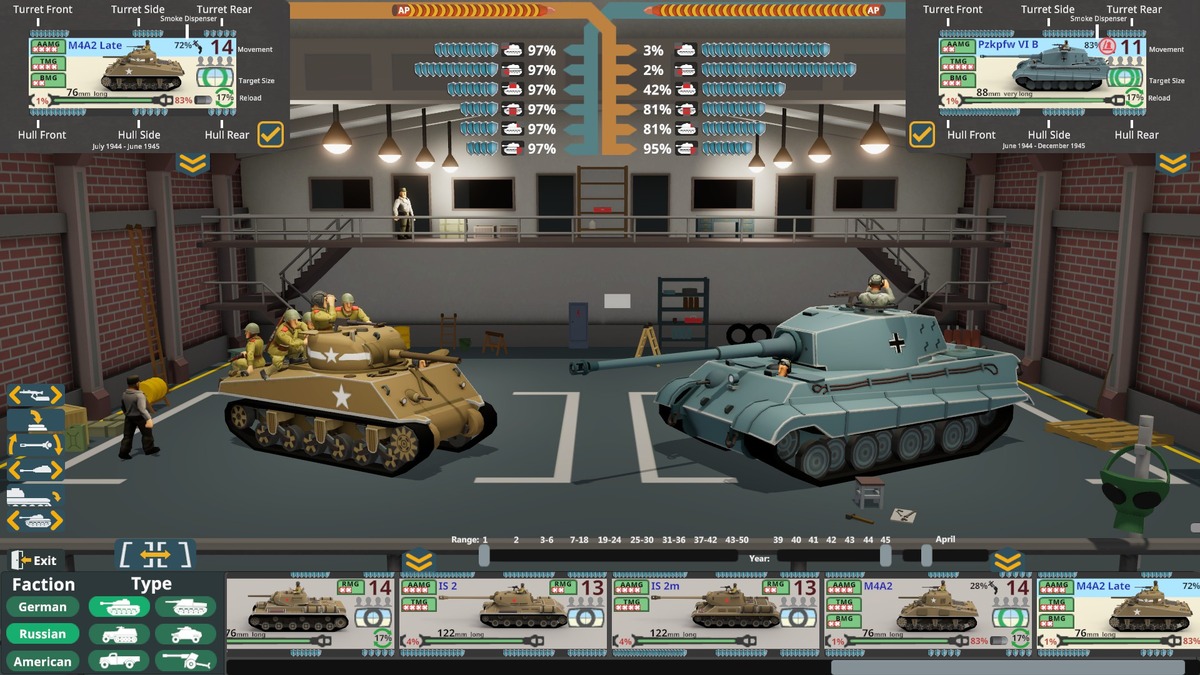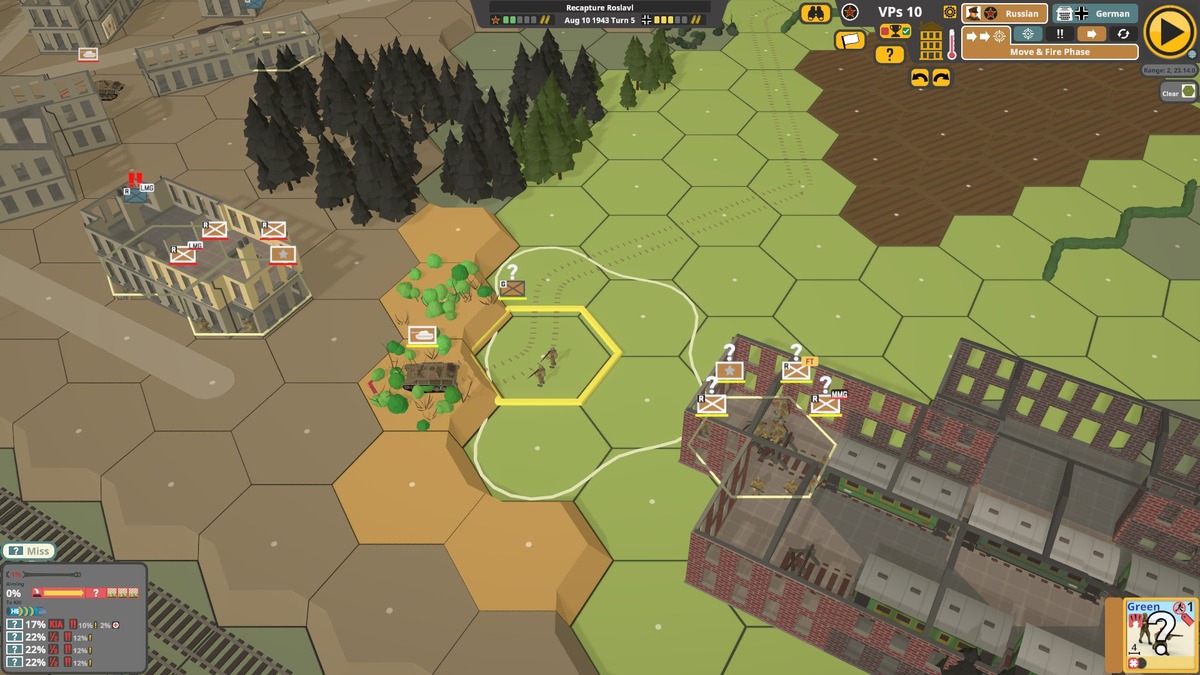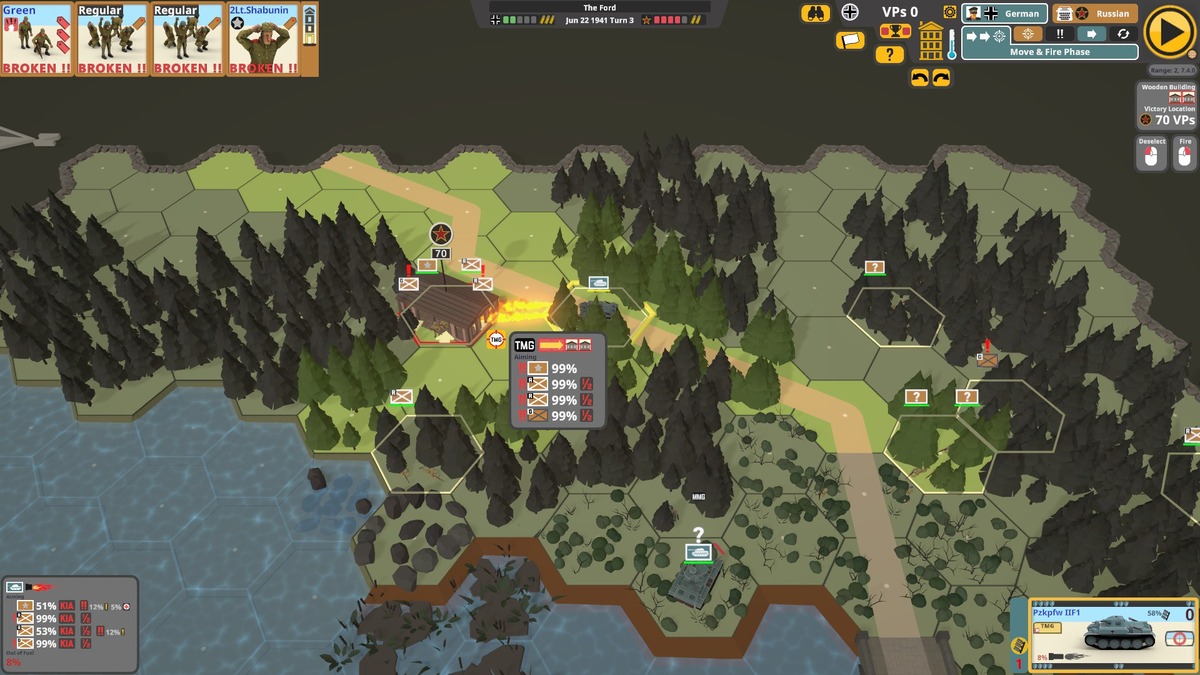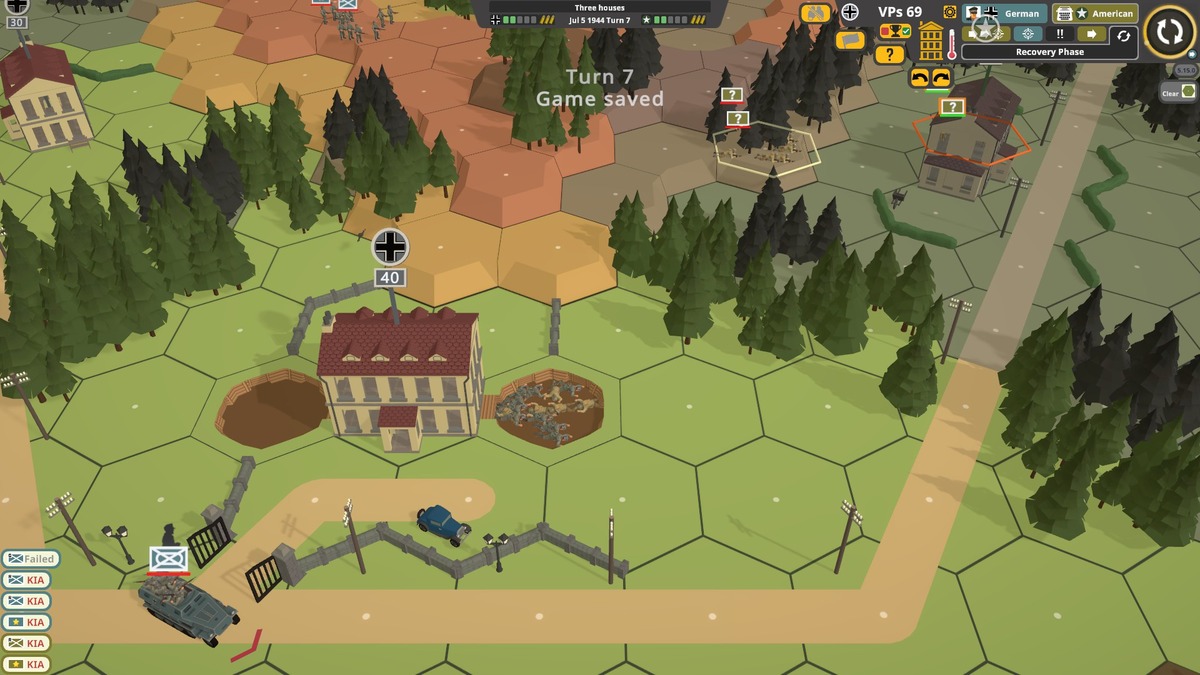Second Front is a good game, but for people entirely new to the genre, it can be tricky. Even between playing the tutorials and reading the manual, some things may remain unclear. Especially since nobody wants to read the manual these days! But since we’ve been through the trenches, we decided to help. Here’s our beginner’s tips guide for Second Front.
Second Front: Beginner and tips guide
The basics
Definitely play through all the tutorials – they explain things better than any single guide could, even if their form isn’t the most easy to use. One thing the game doesn’t tell you is that you don’t have to wait for a unit to stop moving before issuing orders to others. For guns that reload, you don’t need to wait for firing animation to stop to order firing again.
To select only a few infantry in a hex that contains multiple, select the hex, then click on the card of the unit you want to control until they are selected. You can then add more units to the selection. Also, two identical half-squads can be joined into a single normal squad. That can make things easier. An infantry unit may also hold several special weapons at once.
More basic tips:
- Use the ‘TAB key’ to switch the building floor display.
- There are no manual saves. The game saves automatically after the AI player turns.
- The tab where the name of the phase is displayed also shows how many of your units are left to act in the Enemy Fire Phase.
- Temperature determines the likelihood of flames spreading on the map.
- Faction fatigue determines the likelihood of units weakening on hit.
- Faction ammo level determines the odds of running out of specialized ammo for vehicles.
- While it’s not obvious in practice, there are differences in firepower and morale between American, German, and Soviet infantry — see the manual for the full breakdown.
Movement
If a hex is within LOS of enemy troops that you know of, the movement button will have icons telling you the type of target your troops will find in that hex. That’s a warning for you not to go there. And don’t forget that the LOS tool can check enemy lines of sight. You can use it to check potential lines of sight for the troops you’re about to move; it could be that they won’t see the targets from their destination.
- Walking troops are a good target. Running troops are an even better target. Be careful.
- Try to move from cover to cover, and make sure your route is unobserved.
- Some weapons like cannons and machine guns can reach a lot further than other infantry small arms. Remember that when moving.
- A revealed unit will have a colored bar under its marker. Green means that it hasn’t fired yet, yellow means it has fired, and red means that it will not shoot anymore this turn. Use this to consider whether you want to risk overwatch.
- Scenarios can have gun emplacements that, unlike unknown units, don’t appear through the fog of war. They can also switch positions between playthroughs.
- Don’t use the Advance move to end up next to the enemy if they aren’t broken. This will only get your unit shot to pieces during the following Movement and Fire phase.
- Crawling is about as safe a way to trigger overwatch as you can find.
- Manhandled artillery/AT/AA guns have an unpredictable movement rate. They can’t, as of yet, be towed.
- Infantry can hitch a ride on most tanks and armored vehicles.
Tips on fire management in Second Front
- Units shoot worse after any movement and can’t move after shooting.
- The targeting table for infantry targets shows the percentage chance of inflicting a listed status on the unit. No percentage – no chance.
- Guns (tank cannons, etc.) have a more involved table, but when targeting vehicles, the top-left percentage is the summed-up chance to destroy the target.
- Unaimed gunfire is better for infantry in deep cover, having a better chance to hit in exchange for a worse chance to do real harm.
- Vehicles on the move have very bad accuracy, but they’re also harder to hit.
- An unbuttoned vehicle commander is slightly susceptible to small arms fire but increases your accuracy.
- Pinned units can still shoot, but not move.
- Broken units with a single exclamation mark above them will stay in place and try to rally. Shooting them once, even if you don’t hit them, will set them back into the two-exclamation mark state and they’ll continue running away during the escape phase.
- Do not fire panzerfausts and bazookas indoors – it can suppress other units inside. Units on the first/ground floor have the option of stepping outside to shoot.
- Truck and half track passengers can pop out to fire with their rifles and LMGs.
Escape phase
- Escaping units trigger reaction fire. This can be especially bad since they tend to run away over open ground.
- If a broken unit escapes from a hex with an officer, the officer will go with them.
- Broken gun crews tend to abandon their guns.
Advance phase
- An Advance move never triggers overwatch.
- As I mentioned before, don’t use Advance to move next to enemies that aren’t broken.
- Melee is always dangerous and always unpredictable.
- Stack Melee odds in your favor by pinning and breaking enemies, taking an officer along, and having higher quality troops than the enemy.
- The ambush chance shows the odds of the unit striking first. Otherwise, all units fight at the same time, which is what sometimes leads to mutually assured destruction.
- You can feed multiple units into melee attacks from different directions.
- If infantry assaults a tank and fails, the tank can escape from melee on its movement phase. If it doesn’t, infantry remains locked in melee.
Turn end
- This is when units test to fix their weapons. They can also accidentally destroy them.
- Units can rally without an officer, though it’s much harder.
- Broken vehicles may recover, or may be destroyed, representing a crew kill.
- The score counters count down at the end of the enemy turn.
Officers and heroes
- Second Front developers insist on calling officers “heroes” and snipers “soldiers.”
- A wounded officer that has the red minus-star marker is actually giving a debuff to the troops.
- Use officers to move units in blobs outside the sight of the enemy. When closing to contact, spread units into different hexes, and leave the officer with the squad that has a special weapon. This way, you’ll give the enemy more targets and leave the officer boosted with the weapon that matters the most.
- Officers and heroes can be generated by successful morale checks. I have had melees where everyone died, but a new officer was generated.
That wraps up our beginner’s tips guide for Second Front. Best of luck out there on the battlefield.










Published: Feb 2, 2023 09:00 am